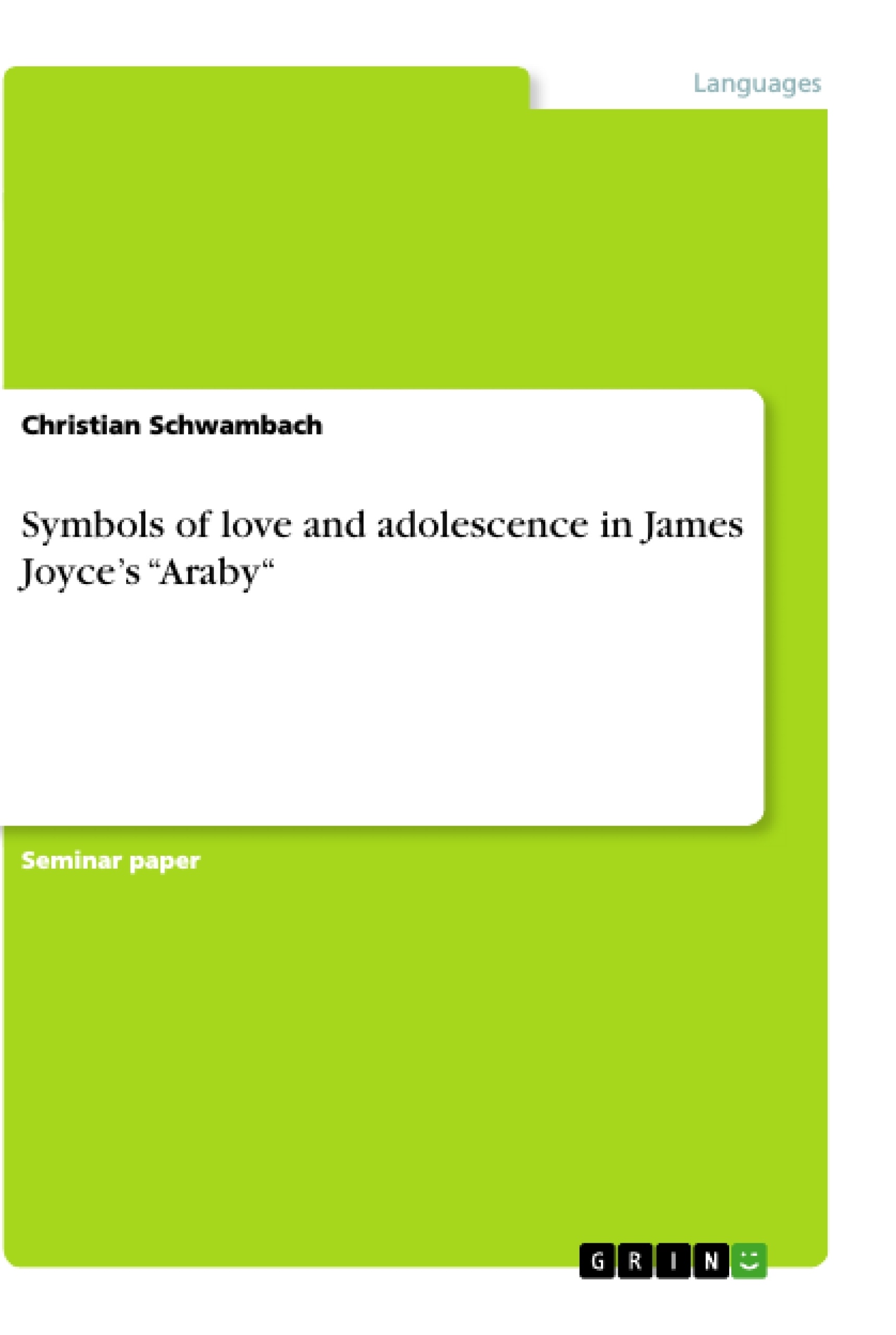This paper will argue that James Joyce’s "Araby" is a short story which contains lots of symbols for love and the process of puberty and that makes it to a love story.
In 1882 Joyce was born in Dublin. He visited a Christian school from 1888 to 1891 (Oeser 139). When he was 23 he finished the tales of "Dubliners", but they were published in 1914. (Oeser 140). “Dubliners” contains 15 tales (Oeser 67). Joyce died in 1941 in Zürich (Oeser 143).
"Araby" is the third story of the “Dubliners” (Collins 93). It is about a boy who lives in Dublin. The boy lives in an old house and he loves the girl who lives opposite the street. His behaviour can be characterized as a kind of obsession, because he observes the girl every day from his window. One day she asks him, if he goes to the bazar, which is called “Araby”. A few days later he visits the bazar, but this leads to a big disappointment, because the market closes when he is there.
The story shows by using different symbols that the boy loves the girl or even more he is obsessed, but the story not a happy end and finishes with the disappoint-ment at the market. The act of disappointment is not just a tragic ending of a love story. It makes his puberty visible as well, because lots of people fell in love when they are getting older and become adolescents. It is also necessary to point out that most of these stories do not have a happy end in reality and in metafiction as well.
Table of Contents
- Introduction
- Symbolism in literature
- Allegory
- Metaphor
- Symbol
- Analysis of symbols of love in Araby
- Conclusion
- Bibliography
Objectives and Key Themes
This paper examines James Joyce's short story "Araby" and analyzes its symbolism in relation to love and the process of puberty. It aims to demonstrate that "Araby" is a love story, rich in symbolic imagery that reflects the protagonist's experiences and emotions.
- Symbolism in literature
- The significance of symbols in interpreting literary works
- The role of symbols in conveying themes of love and adolescence
- The analysis of specific symbols in "Araby" and their interpretations
- The connection between symbolism and the development of the protagonist
Chapter Summaries
- Introduction: Introduces the context of "Araby," providing background information on James Joyce and the collection "Dubliners." It highlights the protagonist's obsession with a girl and his disappointment at the bazaar "Araby," emphasizing the symbolic nature of the story.
- Symbolism in literature: Discusses the importance of figurative language in literary analysis, focusing on the distinction between literal and figurative language. It introduces key concepts such as allegory, metaphor, and symbol, providing examples to illustrate their functions.
- Analysis of symbols of love in Araby: Begins the detailed examination of specific symbols in the story, focusing on how they relate to love and the protagonist's journey of self-discovery. This chapter analyzes the symbol of blindness as a representation of the boy's lack of knowledge and experience.
Keywords
The primary focus of this paper is on the symbolism of love and adolescence in James Joyce's "Araby." Key concepts include allegory, metaphor, and symbol, particularly as they relate to the protagonist's emotional experiences and his journey into adulthood.
- Quote paper
- Christian Schwambach (Author), 2018, Symbols of love and adolescence in James Joyce’s “Araby“, Munich, GRIN Verlag, https://www.grin.com/document/509057




